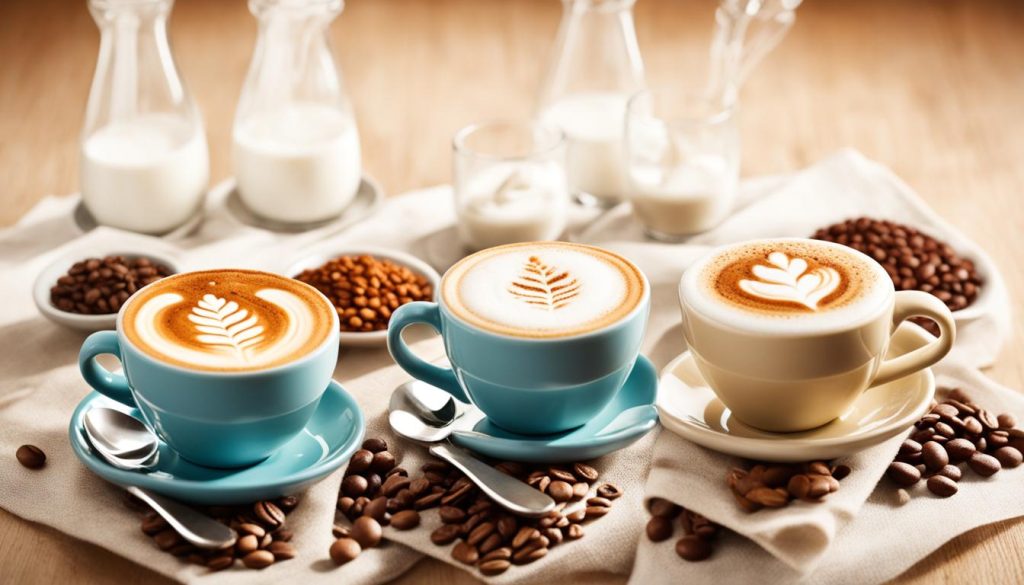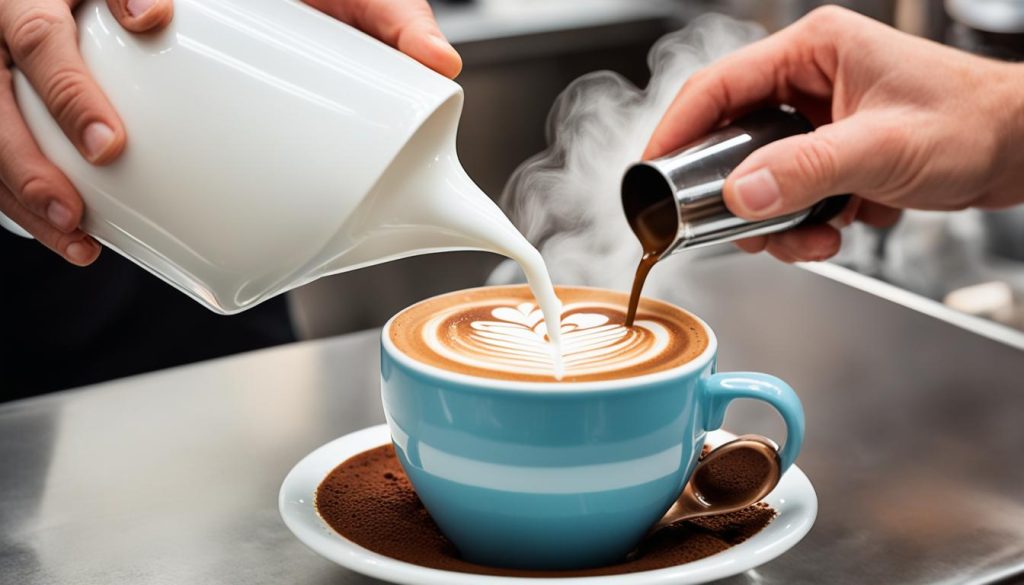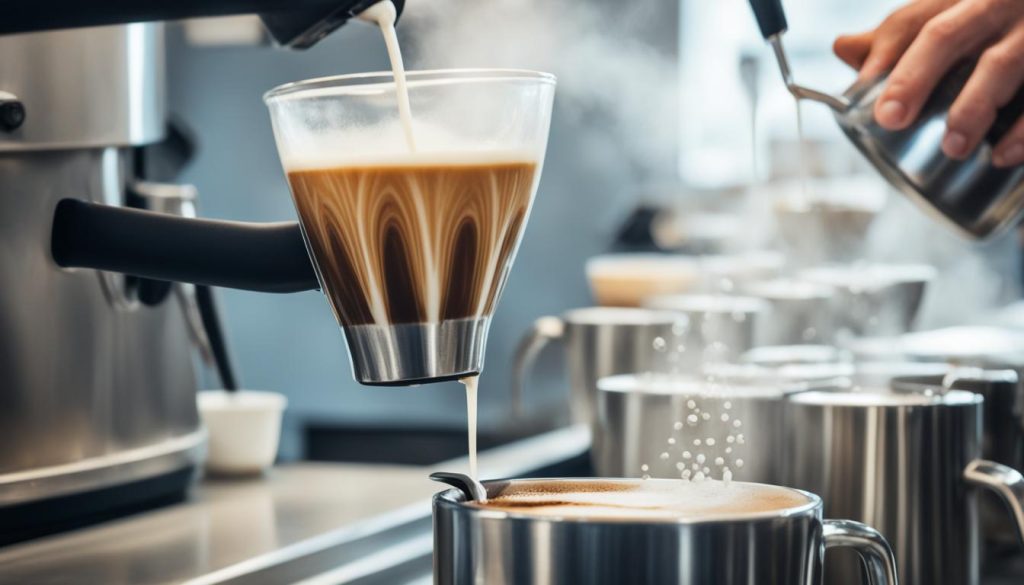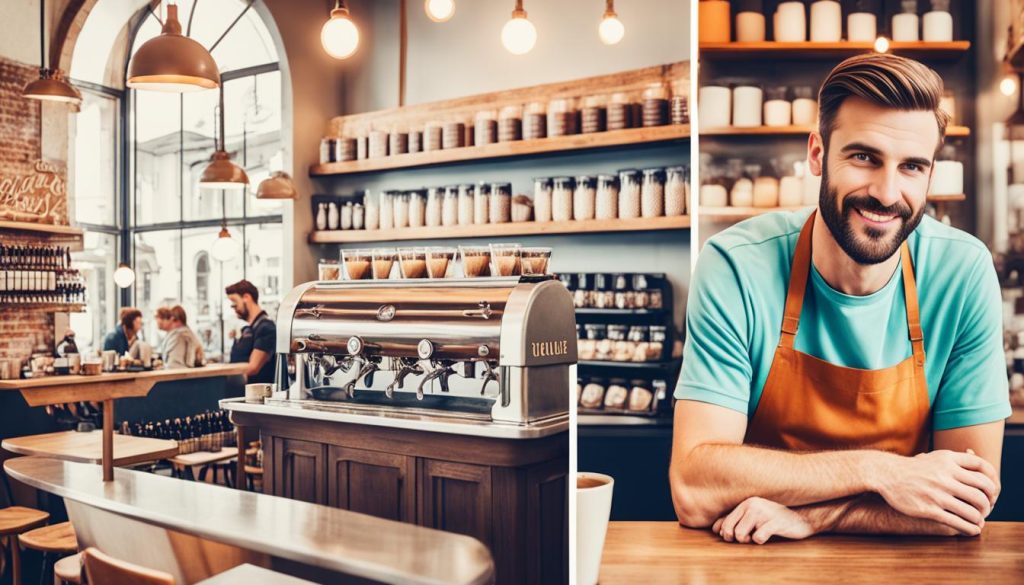Are you a coffee aficionado who wants to explore the nuances between cappuccinos and lattes? Look no further! Both of these espresso-based beverages are beloved by coffee enthusiasts around the world. While they share similarities in terms of their ingredients, there are key differences in the ratios and preparation methods that result in distinct taste and texture profiles. Understanding these differences will help you choose the perfect beverage for your coffee cravings.
Basic Ingredients
Both cappuccinos and lattes are crafted using espresso, which provides the base flavor of the drinks. Additionally, steamed milk and foamed milk are added to create the creamy texture that defines these beverages. While the basic ingredients are the same, the ratios and preparation methods differ, resulting in unique taste and texture experiences.
Let’s take a closer look at each of the basic ingredients:
1. Espresso
First and foremost, both cappuccinos and lattes start with a shot or two of espresso. This concentrated coffee extract forms the foundation of the drink and provides the intense flavor and caffeine kick.
2. Milk
The addition of milk is what transforms a simple shot of espresso into a luxurious and creamy beverage. The type of milk used can vary, with whole milk, skim milk, or plant-based alternatives like soy or almond milk being common choices.
3. Steamed Milk
For both cappuccinos and lattes, steamed milk is an essential ingredient. Steamed milk is created by heating and aerating the milk, which produces a velvety and smooth texture. It adds body and richness to the drink.
4. Foamed Milk
Finally, the presence of foamed milk sets cappuccinos and lattes apart from other coffee beverages. Foamed milk is created by introducing air into the milk while steaming it, resulting in a layer of light and airy foam on top of the drink.
By combining espresso, steamed milk, and foamed milk in different proportions, baristas can achieve the distinct flavor, texture, and appearance of a cappuccino or a latte.

How to Prepare a Cappuccino?
Preparing a delicious cappuccino requires a careful balance of espresso shots, hot milk, and milk foam. The steps below outline the process for creating this popular espresso-based beverage:
- Start by brewing two shots of espresso using your preferred espresso machine. The intensity of the espresso will contribute to the overall flavor of the cappuccino.
- In a separate pitcher or mug, heat the desired amount of milk until it is hot but not boiling. Heating the milk helps create the velvety texture that cappuccinos are known for.
- To create the milk foam, use a steam wand or frother to introduce air into the milk. This will create a dense foam with tiny bubbles that add a luxurious touch to the cappuccino.
- Once the milk foam is ready, pour the hot milk into the espresso shots. Aim for a 1:1 ratio of espresso to milk, though you can adjust the proportions according to personal preference.
- Finally, spoon the milk foam on top of the cappuccino, creating a frothy layer. This helps retain the heat and adds a visually appealing element to the drink.
Remember, the key to a perfect cappuccino lies in achieving the right balance of espresso, hot milk, and milk foam. Experiment with the ratios and techniques to find your preferred taste and texture.

How to Prepare a Latte?
Preparing a latte involves a specific ratio of espresso to steamed milk, with a small layer of milk foam added on top. The classic espresso to steamed milk ratio for a latte is typically around 1:2. This means that for every shot of espresso, you would add twice the amount of steamed milk. This balance creates a smooth and creamy base for the latte.
Unlike cappuccinos, lattes do not require a significant amount of milk foam. Instead, a small layer of velvety foam is added on top of the steamed milk. This small layer of foam contributes to the latte’s overall texture and adds a touch of creaminess.
When preparing a latte, it is important to heat the espresso and milk separately before combining them. This ensures that the final drink is at the desired temperature and maintains the integrity of the flavors.
It’s worth mentioning that variations of the latte exist, allowing for different ratios and even the substitution of coffee with other beverages. For example, some regions offer tea lattes or matcha lattes, where tea or matcha powder is used instead of espresso. These variations provide an opportunity to explore different flavors and cater to individual preferences.

Latte Preparation Process:
- Grind and brew the desired amount of espresso.
- Heat the milk in a separate pitcher using a steaming wand or handheld frother until it reaches the desired temperature.
- Gently pour the steamed milk into the espresso, leaving a small layer of foam on top.
- Optional: Add any desired flavors or sweeteners, such as vanilla syrup or caramel sauce.
- Enjoy your latte hot or over ice.
Now that you know how to prepare a latte, you can experiment with different ratios and flavors to customize your drink. Whether you prefer a classic espresso-based latte or a unique variation, the possibilities are endless.
What is the Difference Between a Cappuccino and a Latte?
The difference in taste and texture between cappuccinos and lattes is influenced by the presence of milk foam. Cappuccinos offer a bold taste that is sure to satisfy veteran coffee lovers. With their rich espresso flavor and the addition of foamed milk, cappuccinos have a strong and robust profile that packs a delightful punch.
On the other hand, lattes have a milder flavor, making them an excellent choice for those looking for a more balanced and approachable coffee experience. The texture of a latte is similar to that of traditional coffee, with a smooth and creamy mouthfeel. Lattes contain less milk foam, resulting in a milky texture that complements the espresso without overpowering it.
Both cappuccinos and lattes feature the distinct flavor of espresso, which adds depth and complexity to the drinks. The use of espresso in these beverages enhances their taste compared to regular coffee, providing a more pronounced and satisfying flavor profile.
| Taste | Texture | |
|---|---|---|
| Cappuccino | Bold and robust | Fluffy and foamier |
| Latte | Milder | Milky |
Origins and Modern Variations
Cappuccinos and lattes have deep roots in Italian coffee culture, with their origins dating back centuries. Cappuccinos can be traced back to the 17th century, where they were first enjoyed by Italian monks who wore brown hoods reminiscent of the drink’s velvety foam. Lattes, on the other hand, were documented as far back as 1867, when they were known as “caffè latte” in Italy. These early versions of the cappuccino and latte laid the foundation for the beloved beverages we enjoy today.
Over time, lattes have seen a surge in popularity and experimentation, giving rise to a variety of modern variations. In addition to the classic espresso and steamed milk combination, lattes now come in various flavors and styles. Mocha lattes, infused with rich chocolate, provide a luxurious twist to the traditional latte. Vanilla lattes add a sweet and aromatic touch, while caramel lattes offer a delectable blend of caramel syrup and creamy milk. These popular flavors have become staples in coffee shops worldwide, catering to diverse palates and preferences.
Furthermore, the latte’s versatility extends beyond traditional ingredients. With the emergence of alternative beverages, latte enthusiasts can also enjoy variations that incorporate matcha, a Japanese green tea powder, or teas like chai or rooibos. These unique adaptations add a new dimension to the latte experience, providing exciting options for those seeking non-coffee alternatives. The ever-evolving latte culture continues to inspire innovation and reinvention, making it a beloved choice for coffee aficionados everywhere.
With its rich history and evolving adaptations, the cappuccino and latte have become global favorites, enjoyed by coffee lovers in different parts of the world, including the United States. The contrast between the bold and velvety cappuccino and the diverse and flavorful latte showcases the versatility and allure of these espresso-based drinks. Whether you prefer the strong flavors of a traditional cappuccino or the endless possibilities of a latte, these beverages continue to captivate and delight coffee enthusiasts worldwide.

Conclusion
In conclusion, cappuccinos and lattes may have similar ingredients, but their unique ratios and preparation methods result in distinct taste and texture profiles. Cappuccinos offer a bold flavor and a fluffy texture, thanks to the generous amount of milk foam. On the other hand, lattes have a milder taste and a more diluted flavor, as they contain less foam and more steamed milk.
Both cappuccinos and lattes have their own appeal, catering to different preferences. Cappuccinos are perfect for those who enjoy a strong espresso flavor with a creamy, frothy texture. Lattes, on the other hand, offer a smoother, milkier experience that may be more suitable for those who prefer a less intense coffee taste.
Ultimately, the choice between a cappuccino and a latte comes down to personal preference. Whether you prefer the boldness of a cappuccino or the milky smoothness of a latte, both beverages can be enjoyed in their own unique way. So, next time you find yourself in a café, consider trying both and discover which one delights your taste buds the most!




